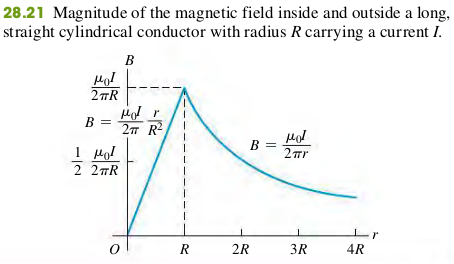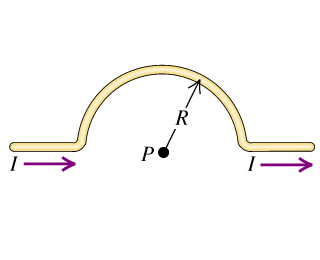2806 Ampere's Law
Ampere's Law is formulated not in terms of magnetic flux, but rather in terms of line integrals of around a closed path, denoted by
- To evaluate this integral, we divide the path into infinitesimal segments , calculate the scalar product of for each segment, and sum these products.
- The circle on the integral sign indicates that this integral is always computed for a closed path, one whose beginning and end points are the same.
Ampere's Law For a Long Straight Conductor

At every point on the circle, and are parallel, and so ; since is constant around the circle, is constant as well.
EXAMPLE 28.8 FIELD OF A LONG CYLINDRICAL CONDUCTOR
A cylindrical conductor with radius carries a current (Fig. 28.20). The current is uniformly distributed over the cross-sectional area of the conductor. Find the magnetic field as a function of the distance from the conductor axis for points both inside and outside the conductor.


Exercises
28.34 Calculate the magnitude of the magnetic field at point P due to the current in the semicircular section of wire shown in the figure (Figure 1). (Hint: Does the current in the long, straight section of the wire produce any field at P?)

Solution